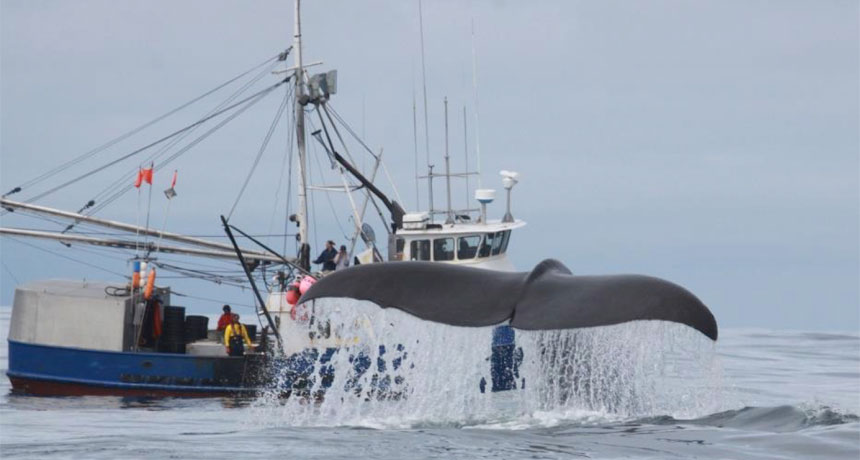
While Sitka is an isolated rural island community, it has impressive research resources for visiting scientists.
Sitka is on the west side of Baranof Island facing the Gulf of Alaska in the nation’s largest National Forest. Accessible only by boat or air, it has a modern airport and is serviced by major commercial airlines multiple times a day. Sitka is a vibrant active community with a regional hospital, three high schools, one of which is a state operated boarding school for Alaska Natives. We have strong internet and phone service, a public radio station and a daily newspaper. We also have daily flights for UPS and Federal Express mail, as well as regular barge service.
Sitka has an extensive and rich history that creates important context for scientific research. The Tlingit people first settled the region more for more than 10,000 years. Today Alaska Natives represent about a quarter of the population and maintain their culture and traditional and customary knowledge systems. Sitka Tribe of Alaska is the local tribal government. The Southeast Alaska Tribal Ocean Research (SEATOR) Program is operated locally by the Sitka Tribe of Alaska. SEATOR monitors harmful algal blooms, seafood quality and ocean acidification throughout southeastern Alaska. Shee Atika is the urban Native Corporation.
Westerners first arrived in Sitka in 1799 when Russian fur traders began hunting local sea otters. The National Park Service maintains the Sitka National Historic Park to preserve the site of a battle between invading Russian traders and indigenous Kiks.ádi Tlingit. Recent research has identified the location of the fort below the forest floor. There are often native demonstrators in the Park demonstrating wood or totem carving. The National Park also maintains the Merrill Photo archive which documents people, landscape and culture beginning in the mid-19th century.
Sitka has a maritime climate typical of Southeastern Alaska. Temperatures are mild, with lows averaging around 32 ⁰F in winter to highs averaging near 70 ⁰F in summer. Sitka maintains the longest time series of air and rain temperature observations for the west coast of the US, extending back to the Russian period. Geomagnetic observations in Sitka also date back to the Russian period and Sitka is currently home to one of the 14 Geomagnetic Observatories in the nation maintained by US Geologic Survey (USGS). Precipitation, mostly rain, is a dominant feature of the ecosystem. The driest months are June and July when average rainfall is around 3 to 4 inches per month and the wettest months are October and November when rainfall averages 12 to 13 inches per month. Weather in Sitka is monitored at the FAA at the airport, by the National Weather Service and at meteorological stations deployed on the slopes above Sitka by USGS and the Alaska Department of Geographic and Geological Services. Sitka Sound Science Center along with an array of citizen scientists maintain a tipping bucket network to capture rain data. They offer detailed information on local microclimates.
Sitka Sound and the adjacent Gulf of Alaska is an excellent location for studying fish, fisheries and marine ecology. It is highly productive, the value of seafood landed in the Port of Sitka ranks among the top ten in the US. The Alaska Department of Fish and Game manages multiple state fisheries from offices located in Sitka, providing a time series for fish abundance. The Northern Southeast Regional Aquaculture Association maintains its flagship salmon hatcheries in Sitka as does the Sitka Sound Science Center offering the opportunity to monitor salmon production over time. The Sitka campus of the University of Alaska Southeast Sitka Campus hosts a rich program of marine mammal research and has observed humpback whales in the area for more than 30 years. The US Fish and Wildlife Service maintains a field camp on St. Lazaria, an island part of the Alaska Maritime National Wildlife Refuge Island that has monitored sea bird production for more than 25 yearsNOAA maintains a tide station in Sitka and the SSSC is partnering with the University of Alaska to monitor currents, water temperature and salinity in the Sound. The SSSC supports research dive research with it’s NSF-funded SCUBA dive locker, compressor and dive safety officer. SSSC partners with several universities to study the impacts of ocean acidification on nearshore habitats.
A small boat fleet of commercial fishermen including trollers, longliners, seiners and gillnetters have participated as platforms for ocean research through collaborations with the Alaska Longline Fishermen’s Association and a host of academic researchers. Sitka also has 3 large fish processors and several small ones that freeze and can fish.
The U.S. Coast Guard has an air station and a buoy tender based in Sitka.
Sitka is surrounded by the Tongass National Forest offering you the opportunity to base your terrestrial research out of Sitka. The USDA Forest Service has a large office in the community with experts on an array of forest topics from fisheries and soils to silviculture and botany. The West Chicagof-Jakobi and South Baranof Wilderness areas are easily accessible from Sitka. The steep mountainsides of southeastern Alaska are dynamic. Research partners with SSSC are involved in developing an early warning system for landslides. In addition, we have partnered with others to examine how landslides transport carbon from ridge tops to the beach. US Geologic Survey monitors stream discharge in the Indian River which is accessible from town.
Sitka has more national historic landmarks than any other community in Alaska. It has two museums, The Sitka Historical Museum and the State operated Sheldon Jackson Museum – that maintain a host of historic collections. And the Sitka Maritime Heritage Society conducts regular research on maritime history.
